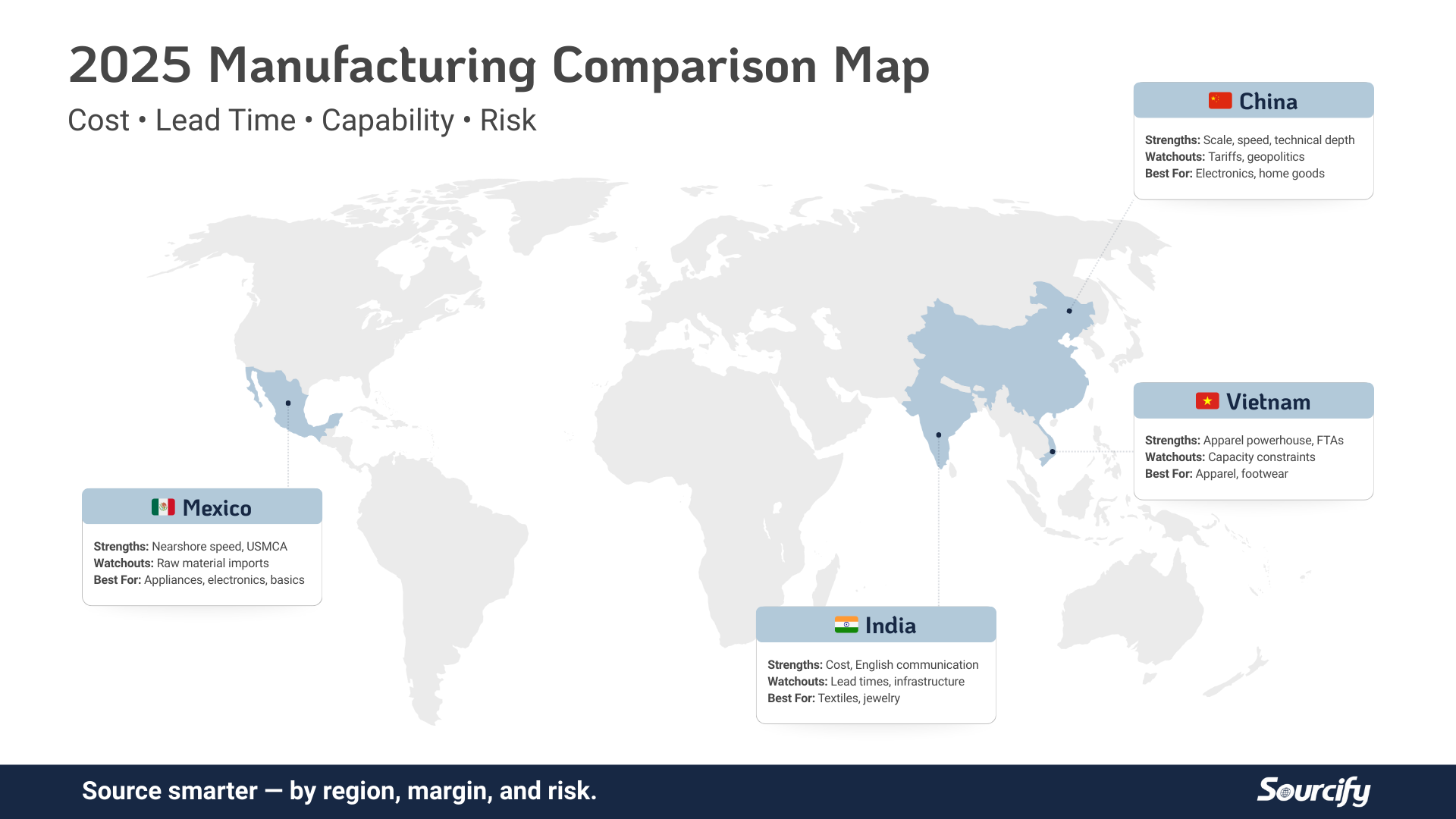Now that you have validated your e-commerce product idea and feel confident it will hit the ground running, you’re ready to source and manufacture your product.
Just like product validation, sourcing and manufacturing require careful consideration of each of the components, steps, time constraints and costs that lead to a successful product. Considering the following elements of sourcing and manufacturing will lead to the development of a supply chain that can produce a well-designed, highly profitable product.
Locate a Manufacturer
The first thing to consider when searching for a manufacturer is whether you want to source your product domestically or internationally, and there are advantages and disadvantages to both options.
Sourcing a product domestically usually means higher labor standards and cost, as well as less variability. However, certain target audiences value domestic sourcing and will pay higher for domestically sourced products.
Additional advantages of domestic sourcing include a lack of language barriers with manufacturers, proximity to for visiting manufacturing facilities, higher production standards and faster shipping time.
However, sourcing internationally is of course well known for drastically lower manufacturing costs and providing a broader range of product variability. Expanding your search to the world can lead to many more options to choose from.
True, it can cost more to ship internationally and can take much more effort to do business across languages and cultures. Furthermore, many brands like to keep their manufacturers a secret to prevent market competition.
That’s why product sourcing schools like Sourcify exist to help simplify the process, providing tailored advice and referrals to bring your product to fruition.
Consider Manufacturing Costs
One of the more obvious things to ask a manufacturer about is the cost of production. However, there are detailed ways of asking about this that can help you plan for unexpected costs that could pop up along the way.
For example, consider asking about hidden fees or production hiccups that previous partners have experienced when working with this manufacturer. Consider also asking about common problems manufacturers face when producing this kind of product. You might also ask about minimum order quantities and their costs, as well as the potential costs of testing product safety and legal requirements.
Additionally, you should also factor in time as a production cost. Ask about the length of time required from manufacturing to completion. Is there any flexibility for rush manufacturing if you are met with a sudden influx in demand? You might also ask about potential delays and the manufacturer’s plans to reduce the span of those delays.
Verify Manufacturer Capability and Reliability
Once you have found a few manufacturers you are considering working with, it’s time to look into their commitment to manufacturing your product within your brand’s desired parameters.
Think of scoping out a manufacturer like a job interview. Ask them all about how they conduct their business, and then call their “references” (brands they have worked with before) to hear how well they do what they say. Quality, production time and ability to meet legal requirements are also things to consider when “interviewing” a manufacturer.
In addition to speaking with the manufacturer and their clients, consider visiting the manufacturing facility to visualize exactly how this manufacturer will meet your product design requirements.
And finally, once you decide to work with a manufacturer, establish some ground rules for reliability and good communication. For example, ask upfront for regular email updates as well as photos of each step of the manufacturing process. Expect delays and hiccups and plan for how to solve them with your manufacturer before they even arise.
Think Through Packaging and Shipping Requirements
Major packaging brands say that e-commerce brands tend to want simple, clean packaging that is protected, keeps the product intact, has consistent branding and is environmentally friendly. When choosing packaging materials, consider the local shipping requirements of your shipping partner in the locations of your buyers and manufacturers. This will prevent delays and potential product loss.
In addition to packaging, it’s also important to consider whether you will need to pay for a warehouse to store goods or establish a retail location where you can sell from.
However, some brands don’t want to worry about packaging or shipping at all. This is where “dropshipping” comes in, a manufacturing method where you arrange to simply have product shipped directly from the manufacturer to the buyer as orders come in. While this method reduces warehousing and shipping costs, it can also reduce profit margins and limit options for product design.
Resources to Begin Sourcing and Manufacturing
There are several resources you can use to begin looking into how and where you will source your first product idea. Domestic directories of manufacturers you can consult include Maker’s Row, ThomasNet, MFG and Kompass. For international directories, consider searching sites like Sourcify.
And of course, consider enrolling in a sourcing school to reduce complications and avoid pitfalls along the way to producing your successful e-commerce product.




